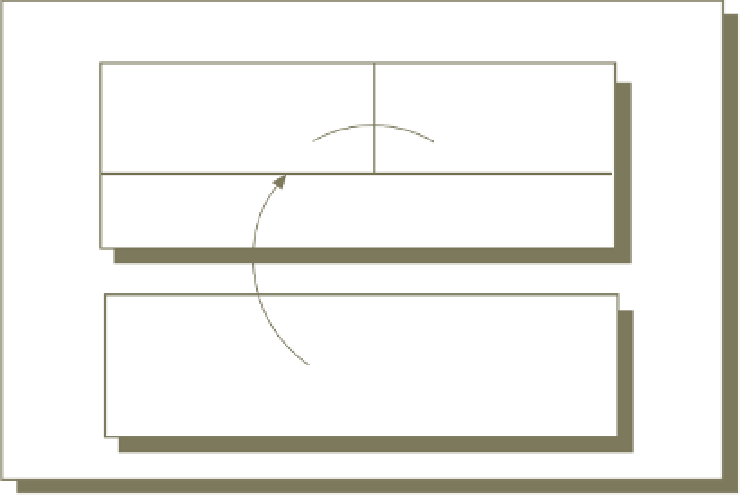Information Technology Reference
In-Depth Information
After both phases have been completed for one instruction, they are performed again for
the second instruction, and so on. Completing the instruction phase followed by the execu-
tion phase is called a
machine cycle
(see Figure 3.2). Some processing units can speed
processing by using
pipelining
, whereby the processing unit gets one instruction, decodes
another, and executes a third at the same time. The Pentium 4 processor, for example, uses
two execution unit pipelines. This means the processing unit can execute two instructions
in a single machine cycle.
machine cycle
The instruction phase followed by
the execution phase.
pipelining
A form of CPU operation in which
multiple execution phases are per-
formed in a single machine cycle.
Figure 3.2
Processing device
Execution of an Instruction
In the instruction phase, a
program's instructions and any
necessary data are read into the
processor (1). Then the instruction
is decoded so the central processor
can understand what to do (2). In the
execution phase, the ALU does what
it is instructed to do, making either
an arithmetic computation or a
logical comparison (3). Then the
results are stored in the registers or
in memory (4). The instruction and
execution phases together make up
one machine cycle.
ALU
Control unit
(3) Execute
(2) Decode
I-Time
E-Time
(4) Store
(1) Fetch
Registers
Memory
AND CAPACITY
The components responsible for processing—the CPU and memory—are housed together
in the same box or cabinet, called the
system unit
. All other computer system devices, such as
the monitor, secondary storage, and keyboard, are linked directly or indirectly into the system
unit housing. In this section, we investigate the characteristics of these important devices.
Processing Characteristics and Functions
Because organizations want efficient processing and timely output, they use a variety of mea-
sures to gauge processing speed. These measures include the time it takes to complete a
machine cycle and clock speed.
Machine Cycle Time
As you have seen, a computer executes an instruction during a machine cycle. The time in
which a machine cycle occurs is measured in
nanoseconds
(one-billionth of 1 second) and
picoseconds
(one-trillionth of 1 second). Machine cycle time also can be measured by how
many instructions are executed in 1 second. This measure, called
MIPS
, stands for millions
of instructions per second. MIPS is another measure of speed for computer systems of all
sizes.
MIPS
Millions of instructions per second,
a measure of machine cycle time.
Clock Speed
Each CPU produces a series of electronic pulses at a predetermined rate, called the
clock
speed
, which affects machine cycle time. The control unit in the CPU manages the stages of
clock speed
A series of electronic pulses pro-
duced at a predetermined rate that
affects machine cycle time.




